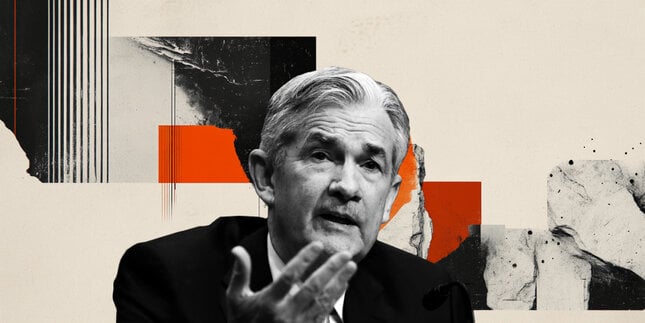Tomorrow's data could not only be the most important this week, but for the whole month. As we anticipated in Friday's NFP podcast, there is a lot riding on US inflation data. That is particularly the case after the Fed promised to take a data-dependant approach. And of course inflation is the most important of that data.
The issue for traders is that there are a bunch of moving parts which could all push the market to react in different directions. On the one hand, the media is likely to focus on the headline figure, because that's what's most important to consumers. But the market cares more about what the Fed will do at their next meeting, so the focus will likely be on core inflation. And the kicker? Well, both of these numbers are expected to go in opposite directions.
Some factors to keep in mind
Before jumping into the expected results, there is some context that needs to be taken into account. First, the Fed is on its unofficial summer break, and won't meet again until late September. That means we'll get August inflation numbers before the meeting, which could modify some of the outlook for monetary policy. Thus, the market reaction could fade a little as investors assess the possibility of a correction a month from now.
The other factor relates to the headline CPI. The prices that are used to make the calculation are sampled at different times of the month. Fuel costs have been one of the driving factors in inflation, and they went down through the course of July. But fuel price sampling happens at the start of the month, so this headline inflation number is likely not to capture the full effect of the price change.
What to look out for
Another thing to keep in mind is that the market is likely to care more about the "faster" data. That is month-over-month comparisons that show where things are going right now. Particularly looking for some effect from the Fed's aggressive tightening. Rates have been rising since March, so there has been time for the effects to start filtering into the market.
Headline CPI change is expected to seriously hit the breaks in July, with monthly change of 0.2% compared to 1.3% in June. That is expected to contribute to the forecast for July annual inflation to step back to 8.7% from 9.1% prior.
What does it mean?
Of course this isn't the first time there has been a pull-back in inflation for one month. So, it doesn't necessarily mean a peak has been reached. But after Friday's NFP, it could contribute to hope that it might have, and there will be anticipation for next month's number to start showing a trend.
On the core side, things aren't so rosy. Monthly core inflation is expected to slow down, but not by nearly as much to 0.5% from 0.7% prior. Where the problem could be is with annual core inflation expected to rise to 6.1% from 5.9% prior. That could leave us in a situation where the headlines will be talking about lower inflation, but the Fed keeps pushing for higher rates to deal with core inflation.
This market forecast is for general information only. It is not an investment advice or a solution to buy or sell securities.
Authors' opinions do not represent the ones of Orbex and its associates. Terms and Conditions and the Privacy Policy apply.
Trading foreign exchange on margin carries a high level of risk, and may not be suitable for all investors. Before deciding to trade foreign exchange, you should carefully consider your investment objectives, level of experience, and risk appetite. There is a possibility that you may sustain a loss of some or all of your investment and therefore you should not invest money that you cannot afford to lose. You should be aware of all the risks associated with foreign exchange trading, and seek advice from an independent financial advisor if you have any doubts.
Recommended Content
Editors’ Picks

NZD/USD holds the rebound near 0.5550 after RBNZ's expected 25 bps rate cut
NZD/USD holds the rebound near 0.5550 after the RBNZ delivered the expected 25 bps interest rate cut to 3.5%. The pair reached a five-year lows earlier this Wednesday amid the global meltdown on the back of tariffs-led recession fears and escalating US-China trade war.

AUD/USD recovers further to 0.6000 despite escalating US-China trade war
AUD/USD is building on its recovery from its lowest level since March 2020, retesting 0.6000 in Wednesday's Asian trading. The pair's upside appears elusive as officials confirmed that the US will proceed with a sweeping 104% tariff on Chinese imports starting this Wednesday.

Gold price extends its consolidative price move near multi-week low
Gold price remains confined in a range near a multi-week low touched on Monday amid mixed fundamental cues. The widening global trade war and recession fears lead to an extended sell-off in equity markets worldwide. Moreover, bets for more aggressive Fed rate cuts and a weaker USD act as a tailwind for the bullion.

Trump's tariffs could be beneficial for Bitcoin: Here's why
Bitcoin dropped below $76,000 on Tuesday as the crypto market extended its decline after President Donald Trump imposed an extra 50% tariff on China. Despite the immediate price dip, several crypto experts suggest that Bitcoin could see tremendous growth if the US Dollar continues to plunge.

The Fed is looking at a hefty price level
We are still in thrall to tariffs, the faux-macro “data” driving markets. The WSJ editorial board advised other countries to take their tariffs to zero so that Trump’s “reciprocal” tariffs will have to be zero, too. Cute, but no cigar.

The Best brokers to trade EUR/USD
SPONSORED Discover the top brokers for trading EUR/USD in 2025. Our list features brokers with competitive spreads, fast execution, and powerful platforms. Whether you're a beginner or an expert, find the right partner to navigate the dynamic Forex market.